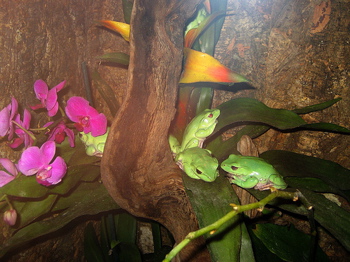Levels of Resiliency
I recently came across a post at The Resilient Blog, Levels of Resiliency, that I have felt provoked and challenged by. Those can be good things, if we take them into our system in such a way as to create of ourselves clearer and hardier Beings. As cellular biologist Bruce Lipton points out in his work, The Biology of Belief, it is not so much our environment that creates our experience of reality as it is our ‘interpretation of that environment.’
Thus it is that, as Joseph Chilton Pearce corroborates in The Biology of Transcendence, the pregnant mother’s interpretation of her environment can produce a child bred for a warrior’s world or a lover’s world; i.e. for a world of fighting and terror—or a world of pleasure and joy. Life will seek to produce ‘resilience’ in either, however.
I thus submit that the model of resilience we utilize does make a difference (see Resiliency’s Shadow—Domestication); it can, reciprocally, arise out of and/or mother the perception of a world-of-objects to be utilized for our narrow dogmatic (political, religious or economic…) self interests. This is a path that will lead to our self-destruction.
I believe our challenge, on the other hand, is to develop models of human resilience that help us grow and evolve and transform into the fullness of our highest potentials; and I believe the folks at The Resilient Blog agree. I submit however that the Levels of Resiliency model as presented is deficient—because it is insufficient.
Simply put, since none of the artificially boundaried human systems identified in the model can be healthy, hardy, or whole in the absence of clean rivers and fertile soil and productive forests or wild fisheries…
systems identified in the model can be healthy, hardy, or whole in the absence of clean rivers and fertile soil and productive forests or wild fisheries…
given, in fact, that none of these human systems can exist in absence of the lowly frog…
that a failure to include the well being and resilience of these other-than-human-realms is a disservice to our clients (and to their children), and an insult to the Frogs and the soils and rivers… of Mother Earth.
The absence of the wellbeing of the other than human world in business models of resilience leads to unintelligent risk management. Short-term profits may be gleaned, but the wealth-of-sufficiency, and the wholeness-of-mind and of spirit and of body, require the hardiness and biognosis that can only come from knowing what the Aspen Grove knows.

owen59
09/08/2007 at 12:14 pmCommunity resilience has been recognised as a big issue in the health of rural people in Australia, especially as there has been prolonged drought and, where it has broken, there seems to be gale storms and floods.